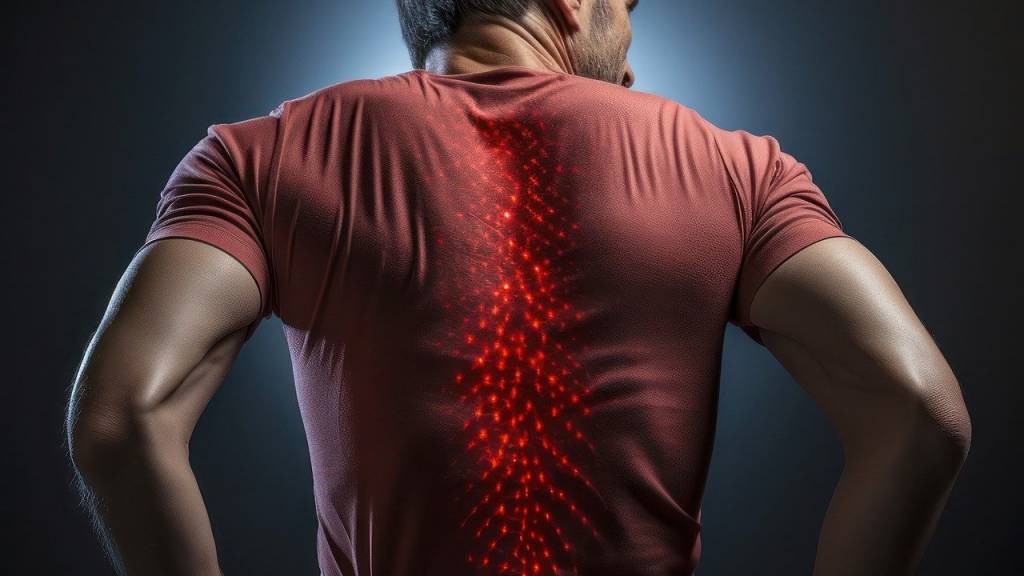Back Pain: From Diagnosis to Treatment
Back pain is a common condition, also known as low back pain or lumbar pain, affecting millions of people worldwide. It manifests with varying intensity of pain and can be caused by multiple factors, including muscle strains, joint problems, or poor posture. A correct diagnosis and appropriate treatment are essential for recovery.
The Structure of the Spine and Back Pain
The spine is made up of stacked vertebrae separated by flexible intervertebral discs, which together allow movements such as bending and twisting.
Injuries to this structure, as well as to the surrounding muscles and ligaments, can cause pain. Common triggers of back pain include:
-
Muscle or ligament injuries: often due to sudden exertion or lifting heavy loads.
-
Intervertebral disc problems: such as herniated discs or degeneration.
-
Arthritis: which can affect the spinal joints.
-
Poor posture: maintained for prolonged periods.
-
Overweight and stress: which increase the load on the spine or cause muscle tension.
Diagnosis of Back Pain
At the first signs of lumbar pain, it is advisable to see a general practitioner who, if the problem persists, will refer the patient to a specialist.
The specialist doctor uses various methods to identify the cause of the pain:
-
Medical history: gathering information about symptoms, onset, and activities that worsen the pain.
-
Physical examination: assessing posture, flexibility, and sensitivity of the back.
-
Imaging: X-rays, MRI, or CT scans may reveal structural abnormalities.
-
Specialist tests: in cases of suspected neurological damage, tests like electromyography may be performed.
An accurate diagnosis is fundamental to planning an adequate and targeted treatment.
Treatment Options
Treatments for back pain vary depending on the specific cause and severity of symptoms.
For this reason, lumbar pain can be treated with conservative or surgical interventions.
Non-Surgical Treatments
-
Orthotic treatment:
Lumbar braces and supports are useful tools in the treatment and management of back pain, providing support to the spine and limiting sudden movements that could worsen the pain. These devices, commonly made with elastic materials and reinforcements, are worn around the lower back to stabilize the area and relieve pressure on the spine.
It is advisable to visit an orthopedics specialist and rely on specialized orthotic technicians who assess the measurements, sizes, and heights of braces according to the patient’s body type and pathology.
The main functions and benefits of lumbar braces include:
-
Back stabilization: Braces help reduce excessive and sudden movements that may worsen pain or cause new injuries. By stabilizing the spine, they reduce pressure on intervertebral discs and joints, facilitating recovery.
-
Support for correct posture: Back pain is often worsened by poor posture, especially when spending long periods sitting or standing without proper support. These orthotic devices promote correct spinal alignment, preventing harmful bending or twisting of the back.
-
Reduction of muscle tension: Wearing a lumbar brace can help reduce muscle tension. The back muscles do not have to work excessively to maintain posture, as the device’s support redistributes the load more evenly.
-
Improvement of circulation and inflammation reduction: Some lumbar braces are made with thermal materials that keep the lower back warm. Heat can improve blood circulation in the painful area, aiding in reducing inflammation and related symptoms.
These orthotic devices are recommended in various situations, such as:
-
Physical activities: Especially when performing heavy lifting or intense exertion, lumbar braces offer an extra level of protection against possible injuries.
-
Post-operative recovery: After back surgery, wearing a brace can support the spine and allow safer healing.
-
Treatment of chronic pain: Those suffering from persistent lumbar pain can find relief through regular use of a lumbar brace, especially during daily activities that require spinal stability.
-
Treatment of acute pain: Using lumbar supports during the day helps reduce pain.
-
Physical therapies: Application of heat or ice can relieve pain, while techniques such as ultrasound or transcutaneous electrical nerve stimulation (TENS) are used in some cases.
-
Pharmacotherapy: Anti-inflammatory drugs (NSAIDs) like ibuprofen reduce pain and inflammation. For chronic cases, antidepressants or muscle relaxants may be prescribed.
-
Physiotherapy: Exercises aimed at muscle strengthening and posture correction. Lumbar stabilization exercises improve motor control of the back, reducing the risk of recurrence.
Surgical Treatments
Surgery is considered only when conservative therapies have failed. Surgical techniques range from microdiscectomy to treat herniated discs to spinal fusion for more severe conditions. Careful assessment of risks and benefits is essential before proceeding.
Prevention of Back Pain
Preventing back pain is possible with some daily precautions:
-
Proper nutrition: maintain a healthy weight to reduce spinal load.
-
Regular exercise: strengthen core and back muscles to stabilize the spine.
-
Ergonomics: adjust the workspace to maintain correct posture.
-
Correct lifting techniques: bend the knees and use leg muscles.
-
Stretching: keep the back flexible, especially for those who sit many hours.
-
Stress management: breathing and relaxation exercises can alleviate muscle tension.
For more information, contact us!
We are available at 035/212110 from Monday to Saturday, 9:00–12:30 and 15:00–19:00, or by email at:


